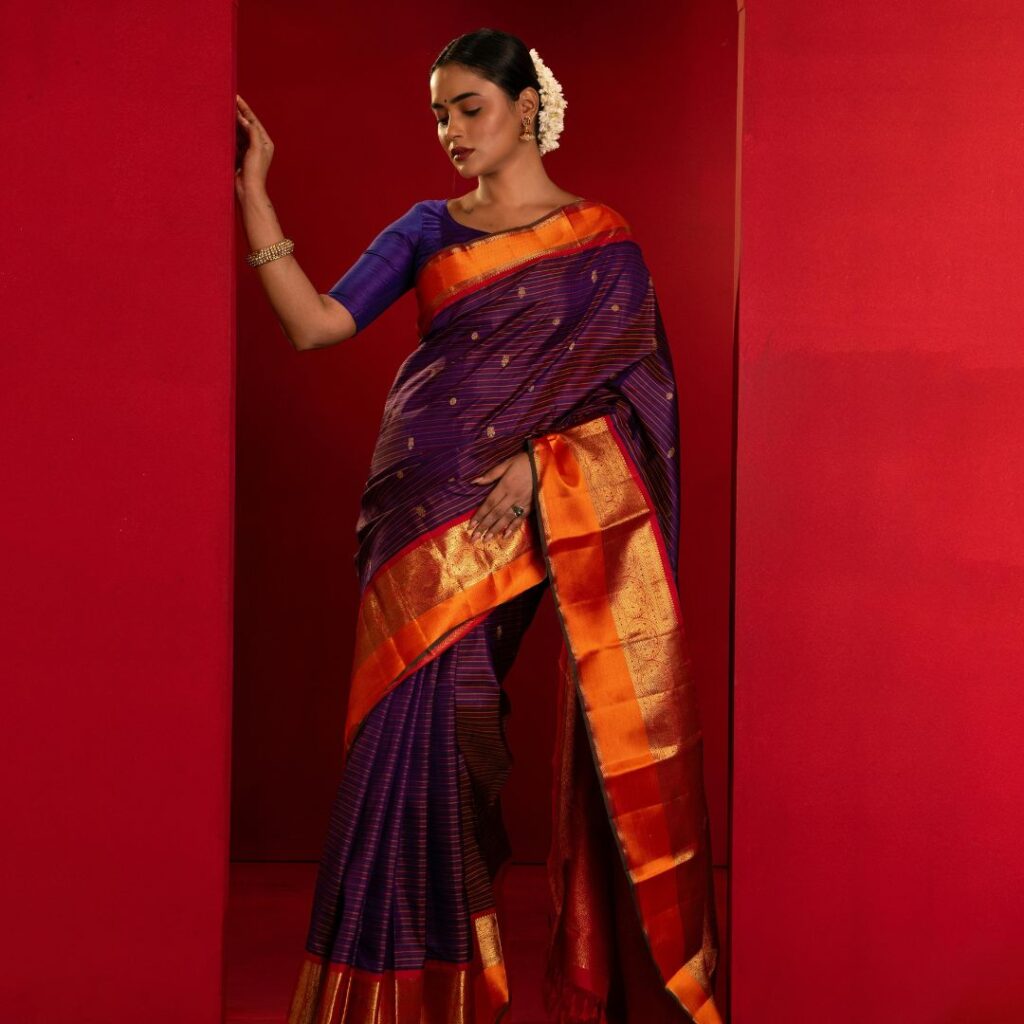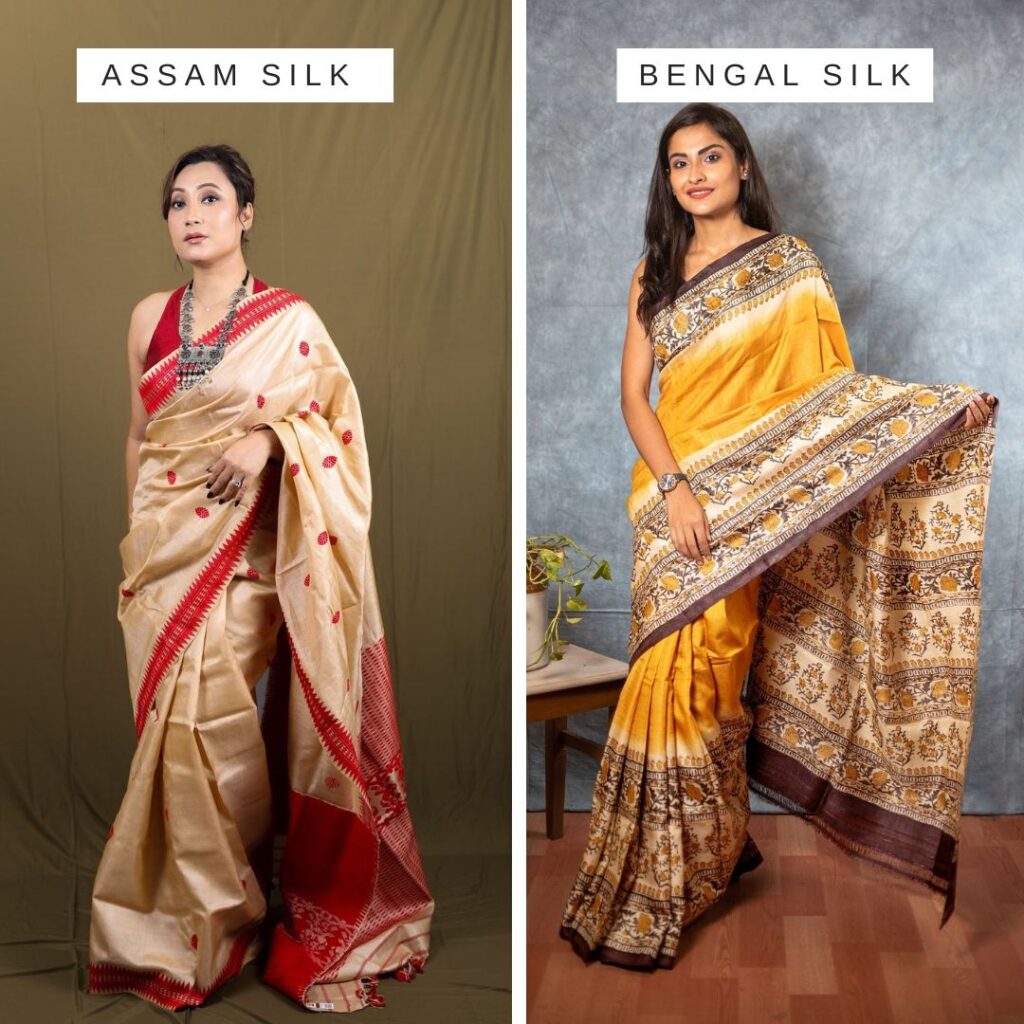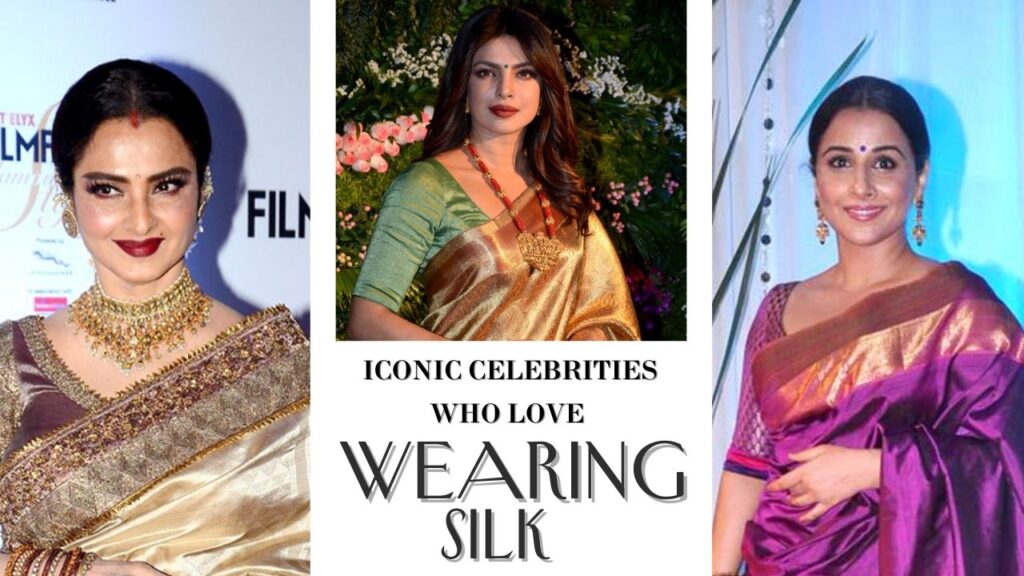Introduction
Silk has always been a symbol of elegance, luxury, and tradition in India. For Indian brides, silk is not just a fabric, it’s an emotion wrapped in culture and heritage. Among all bridal outfits, silk lehengas stand out as a timeless choice that blends grandeur with grace.
From sacred rituals to vibrant ceremonies, a silk lehenga perfectly captures the richness of Indian weddings. Let’s explore why these lehengas never go out of style and how each region of India adds its own charm to this bridal favorite.
Silk has always been a symbol of elegance, luxury, and tradition in India. For Indian brides, silk is not just a fabric, it’s an emotion wrapped in culture and heritage. Among all bridal outfits, silk lehengas stand out as a timeless choice that blends grandeur with grace.
From sacred rituals to vibrant ceremonies, a silk lehenga perfectly captures the richness of Indian weddings. Let’s explore why these lehengas never go out of style and how each region of India adds its own charm to this bridal favorite.
Silk lehengas are loved for their rich texture and sheen, luxurious drapes and structure, ability to carry heavy embroidery and zari work, comfort and durability over long hours of wear.
Whether it’s a royal palace wedding or an intimate mandap ceremony, silk lehengas can be styled to match any theme, from vintage glam to minimal chic.
North India: Regal Elegance in Banarasi Silk
Banarasi silk lehengas, especially from Varanasi, are known for their rich zari work and Mughal inspired motifs. North Indian brides often go for deep shades like red, maroon, or royal blue with golden embroidery. Looks royal and grand, perfect for winter weddings and easy to style with heavy dupattas and jewellery.
South India: Traditional Grandeur with Kanjeevaram Silk
Kanjeevaram silk, woven in kanchipuram, with pure mulberry silk and heavy golden zari. originally used for sarees, is now being beautifully tailored into bridal lehengas. With its thick weave, bold colors. Inspired by temple art, peacocks, elephants, and checks.
Brides love it because it feels sacred and traditional, has a rich cultural heritage, is very durable, often passed down to generations. This silk adds unmatched richness to the bridal look.
Other Popular South Silks:
- Mysore Silk (Karnataka): lightweight, plain with minimal zari.
- Pochampally Ikat (Telangana): geometric and colorful patterns.
- Dharmavaram Silk (Andhra Pradesh): similar to Kanjeevaram but softer with muted tones.
West India: Graceful Glamour in Paithani and Patola Silk
In Maharashtra, Paithani silks are prized for their handwoven beauty and vibrant hues. Paithani silk is woven in paithan (Aurangabad). Made with fine silk and zari, with peacock, lotus, vines and parrot motifs. It’s very colorful and vibrant. Brides here love geometric and peacock motifs woven with metallic threads.
It stands out because of its rich golden pallu and the two or three color iridescent effect looks like changing shades.
In Gujrat, patola silk is quite famous. Woven in patna, known for double ikat weaving technique (takes months to make). Intricate with geometric patterns and designs, elephants, flowers. Patola sarees are often worn by brides in Gujarati weddings.

East India: Rich Heritage with Assam and Bengal Silk
Assam silk (Muga, Eri) and Bengal silk (Baluchari, Tussar) are known for their softness, lightness, and heritage weaves. East Indian brides often go for softer pastels or ivory shades with detailed thread work.
In Assam Muga silk for its golden yellow vibrant color, Eri silk for its soft and warm texture, and Paat silk for its white and glossy look is very famous. Muga silk is exclusive to Assam and has natural shine. Eri silk is called ahimsa silk, very breathable and perfect for humid weather.
In Bengal Baluchari silk from murshidabad is famous for its mythological scenes woven on pallu. And Tussar silk from Jharkhand and Bihar famous for raw texture, earthy tones, light and breezy.
East indian silk is loved for artistic and story telling designs and lightweight and elegant look good for day weddings or summer ceremonies.

Fusion & Contemporary Silk Lehenga Trends
Modern brides are now blending traditional silk fabrics with contemporary cuts—think silk lehengas with cape-style blouses, off-shoulder cholis, pockets, and even sneakers! Designers are also using pastel silks, ruffles, and minimalist embroidery for a chic twist.
Conclusion
Silk lehengas are more than just wedding outfits—they’re stories woven in threads of tradition and dreams. Whether you’re drawn to the regal Banarasi, the rich Kanjeevaram, or a minimal modern vibe, there’s a silk lehenga waiting to make your big day unforgettable.
FAQs: Bridal Looks with Silk Lehengas Across India
1. Why are silk lehengas preferred for bridal wear in India?
Because silk offers a luxurious feel, beautiful shine, and holds embroidery well—making it perfect for bridal wear.
2. How do I choose the right type of silk for my bridal lehenga?
Choose based on your region, comfort, budget, and wedding theme. For example, Kanjeevaram is perfect for grandeur, while Assam silk is great for lightweight elegance.
3. Are silk lehengas suitable for summer weddings?
Yes! Opt for lighter silks like Tussar or Eri, and go for sleeveless or airy designs to stay cool.
4. Can I mix modern designs with traditional silk lehengas?
Absolutely. Try crop tops, jackets, or pastel shades with traditional silk bases for a fusion look.
5. How should I accessorize a silk bridal lehenga?
Match your jewellery style to your lehenga—gold for traditional silks, or diamonds and pearls for modern styles.
6. Can I reuse my silk bridal lehenga after the wedding?
Yes! Pair the skirt with a simpler blouse or wear the dupatta with other outfits for festive occasions.
7. What colors work best in silk lehengas for brides?
Classic reds, maroons, golds, and pinks are popular, but pastels and jewel tones like emerald and navy are also trending.



